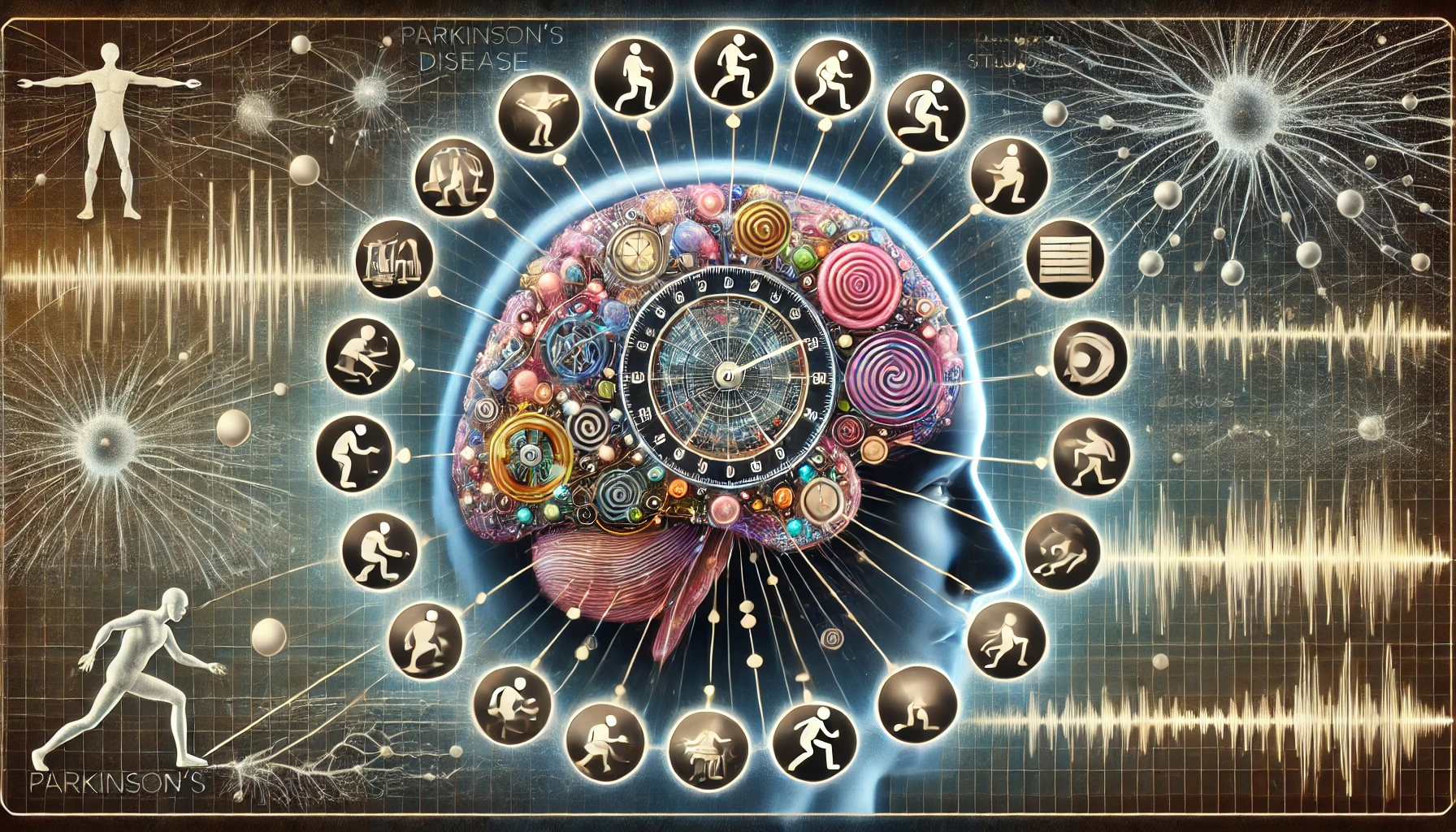Walking, chewing, scratching, hammering… Many movements require repeating at regular intervals – but can run at various speeds. How can a neural circuit flexibly generate these patterns?
We solved the problem using active inference: a framework in which we predict the sensory consequences of upcoming actions, which entrains low-level reflexes to generate those appropriate actions (Parr, Oswal & Manohar, Neurosci Biobeh Rev 2025). While the maths is complicated, it needs only local computations, making it biologically plausible.
Remarkably, we found that specific lesions were able to re-create certain features seen in Parkinson’s disease: decrement (reduction in amplitude of repeated movements), festination (speeding up over time), and breakdown of rhythm. To our knowledge, this is the first mechanistic, quantitative explanation of this triad of dynamic features. [image:chatgpt]
